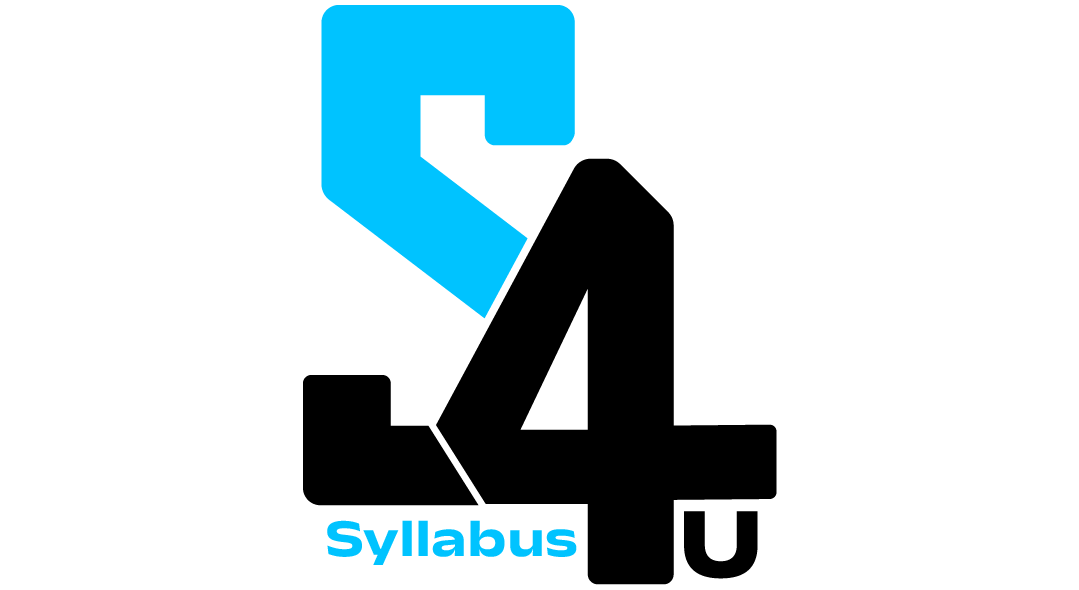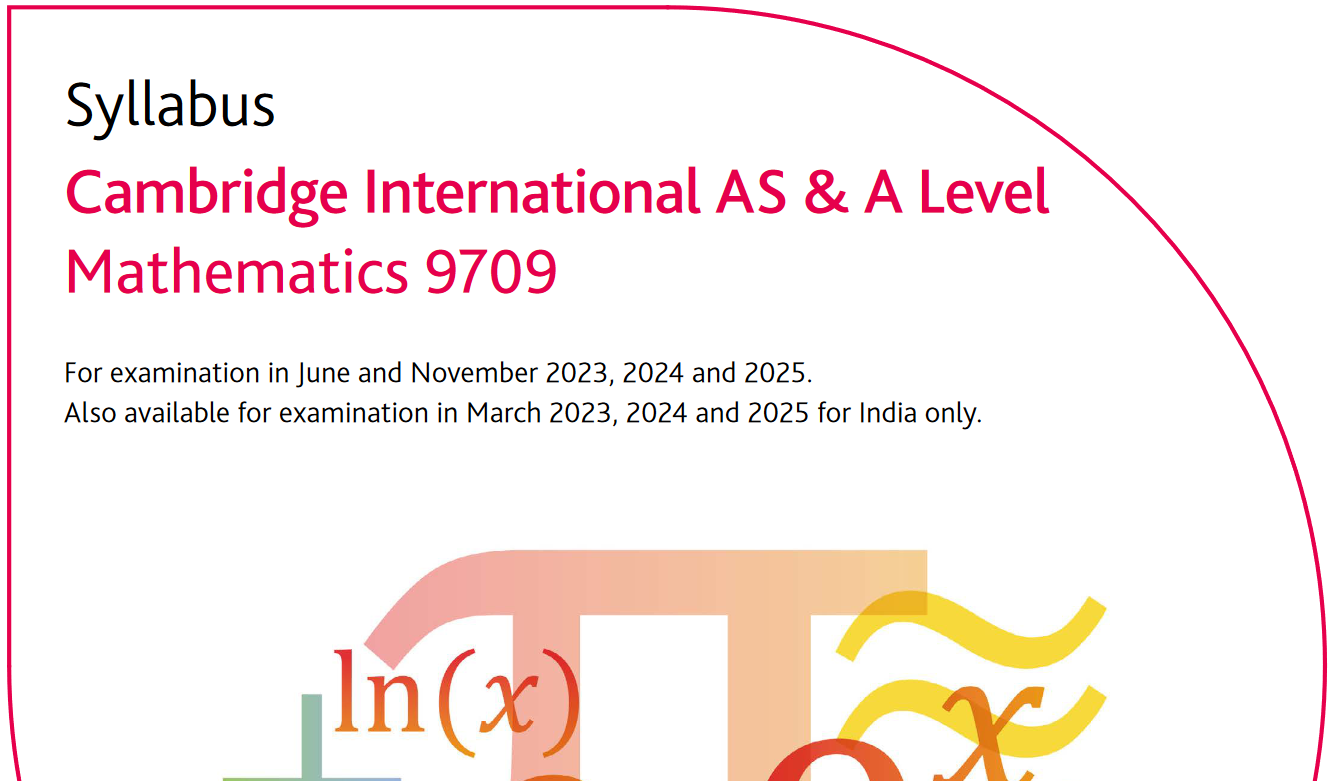The 9709 Cambridge International A Level Mathematics syllabus covers key areas of pure mathematics, mechanics, probability, and statistics. It is designed to develop mathematical knowledge and problem-solving skills. Students explore algebra, trigonometry, calculus, vectors, and more in pure mathematics, while mechanics covers motion, forces, and energy concepts. The probability and statistics sections teach data analysis, probability theory, and statistical distributions. The syllabus promotes logical thinking and the ability to work through complex problems. It prepares students for higher education and various careers requiring strong mathematical skills. The assessment consists of written examinations without coursework.
Cambridge International AS & A Level Mathematics Syllabus
The Cambridge International AS & A Level Mathematics (9709 syllabus) is designed to develop a comprehensive understanding of mathematical concepts and foster a deep interest in the subject. It is commonly taken in two parts: the AS Level, which covers the first half of the content, and the full A Level, which builds on this foundation. Check Full 9709 Syllabus in details.
9709 Syllabus Mathematics
The 9709 Syllabus corresponds to the Cambridge International AS & A Level Mathematics syllabus. The curriculum aims to develop mathematical knowledge and skills through a structured approach, covering various branches of mathematics.
9709 Syllabus: Overview
The syllabus is structured around three main areas:
- Pure Mathematics (P1 and P3):
- Pure Mathematics is the core of the syllabus and is examined in two papers:
- P1 (Pure Mathematics 1) – Typically for AS Level.
- P3 (Pure Mathematics 3) – Usually covered at A Level after completing P1.
- Topics include algebra, trigonometry, calculus, vectors, functions, and coordinate geometry.
- Pure Mathematics is the core of the syllabus and is examined in two papers:
- Mechanics (M1 and M2):
- Mechanics is applied mathematics focusing on the study of motion and forces.
- M1 (Mechanics 1) is typically part of the AS Level.
- M2 (Mechanics 2) is included in the A Level.
- Topics include kinematics, Newton’s laws of motion, energy, work, and power.
- Statistics (S1 and S2):
- Statistics involves the collection, analysis, and interpretation of data.
- S1 (Statistics 1) is usually part of the AS Level.
- S2 (Statistics 2) is for A Level.
- Topics include probability, discrete random variables, the binomial and normal distributions, and hypothesis testing.
Papers and Structure:
To achieve the full A Level, candidates must complete different combinations of papers depending on their chosen focus.
For the AS Level:
- P1 (Pure Mathematics 1)
- M1 (Mechanics 1) or S1 (Statistics 1)
For the full A Level:
- P1 (Pure Mathematics 1)
- P3 (Pure Mathematics 3)
- Plus any two of the following:
- M1 (Mechanics 1), M2 (Mechanics 2)
- S1 (Statistics 1), S2 (Statistics 2)
Exam Structure:
- Each paper is typically 1 hour 30 minutes to 2 hours long.
- The assessments focus on applying mathematical techniques to solve problems, logical reasoning, and the presentation of mathematical arguments.
9709 Syllabus Maths- Core Content
Pure Mathematics (P1 and P3)
- Algebra and Functions
- Quadratics, inequalities, polynomials
- Graphs, transformations, and functions
- Coordinate Geometry
- Equations of lines and circles
- Intersection of lines and curves
- Sequences and Series
- Arithmetic and geometric progressions
- Summation of series
- Trigonometry
- Sine and cosine rules
- Radian measure, trigonometric identities, and equations
- Exponentials and Logarithms
- Laws of logarithms, natural logarithms
- Exponential growth and decay
- Calculus
- Differentiation and integration techniques
- Application of calculus to curve sketching, rates of change, areas under curves, and volumes of revolution
- Vectors (P3)
- Vector algebra
- Scalar product, vector equations of lines and planes
Mechanics (M1 and M2)
- Kinematics of Motion
- Equations of motion for uniform and non-uniform acceleration
- Motion in a straight line with constant acceleration
- Forces and Equilibrium
- Force as a vector, Newton’s laws of motion
- Equilibrium of a particle and friction
- Energy, Work, and Power
- Conservation of energy
- Work done and power in mechanics contexts
- Momentum
- Linear momentum, impulse
- Conservation of momentum in collisions
Probability & Statistics (S1 and S2)
- Data Representation
- Measures of central tendency (mean, median, mode)
- Measures of spread (variance, standard deviation)
- Probability
- Basic probability rules, conditional probability
- Probability distributions, including the binomial and normal distributions
- Correlation and Regression
- Linear regression analysis, Pearson’s correlation coefficient
- Statistical Inference
- Hypothesis testing, confidence intervals
- Normal distribution applications
Assessment:
- AS Level:
- Paper 1 (P1) – Pure Mathematics 1
- Paper 5 (S1 or M1) – Probability & Statistics 1 or Mechanics 1
- A Level:
- Paper 3 (P3) – Pure Mathematics 3
- Paper 6 (S2 or M2) – Probability & Statistics 2 or Mechanics 2
The structure allows flexibility, with students focusing on either statistics or mechanics alongside core pure mathematics.
9709 Syllabus Key Focus Area
- Developing fluency with mathematical tools.
- Encouraging logical reasoning and problem-solving skills.
- Applying mathematical concepts to real-world situations, particularly through mechanics and statistics.
9709 Syllabus for Students
Cambridge International A Level Mathematics teaches a variety of transferable abilities. These include the capacity to interact with mathematical data, reason rationally and independently, evaluate correctness, model issues mathematically, analyze results, and reflect on findings.
Learners may use these abilities across a wide range of disciplines, and they are well-equipped for furthering their education or entering the workforce.
Teachers teaching at the AS level have three options for preparing their students for the Cambridge International AS Level Mathematics: Mechanics and Pure Mathematics, Probability & Statistics, and Pure Mathematics alone.
Depending on their preference for applied mathematics (Mechanics and/or Probability and Statistics), A Level instructors can also select from a variety of pathways leading to Cambridge International A Level Mathematics.
Pure Mathematics and Probability & Statistics alone, or Pure Mathematics, Mechanics and Probability & Statistics, are the two courses available for the 2020 and onwards exams at Cambridge International A Level Mathematics exam.
9709 Syllabus PDF Download
The syllabus year refers to the year in which the examination will be taken.
Source: cambridgeinternational.org
Syllabus Learning Support Materials
- Prior Learning Guidance (PDF, 283KB)
- Support for Mathematics (PDF, 1MB)
- Mathematics Notation List (PDF, 274KB)
Related Post: 0580 Syllabus
FAQs
The Cambridge International AS & A Level Mathematics (9709) syllabus includes multiple topics, and Article 5 typically refers to the syllabus section detailing “Formulae and Tables” or “Use of Calculators and Formulae”. However, if you’re referring to a specific syllabus update or section, please clarify.
Here are some FAQs related to Article 5:
1. What is covered under Article 5 in the 9709 syllabus?
Article 5 generally outlines the use of formulae, tables, and approved mathematical tools like calculators in the AS & A Level Mathematics exam.
2. Are students provided with a formula sheet in the 9709 exam?
Yes, certain standard formulae are provided in the Mathematical Formulae and Tables booklet. However, students are expected to memorize essential formulas that are not included.
3. Can I use a calculator in the 9709 exam?
Yes, calculators are allowed, but they must comply with Cambridge guidelines. Calculators with symbolic algebra manipulation (CAS), graphical display, or programming functions are not permitted.
4. Do I need to memorize all formulas for the exam?
While some formulas are provided, many need to be memorized, such as differentiation, integration rules, and trigonometric identities.
5. Where can I find the official formulae booklet for 9709?
You can download the Mathematical Formulae and Tables booklet from the official Cambridge Assessment International Education (CAIE) website.


1 thought on “9709 Syllabus- Cambridge International AS & A Level Mathematics”